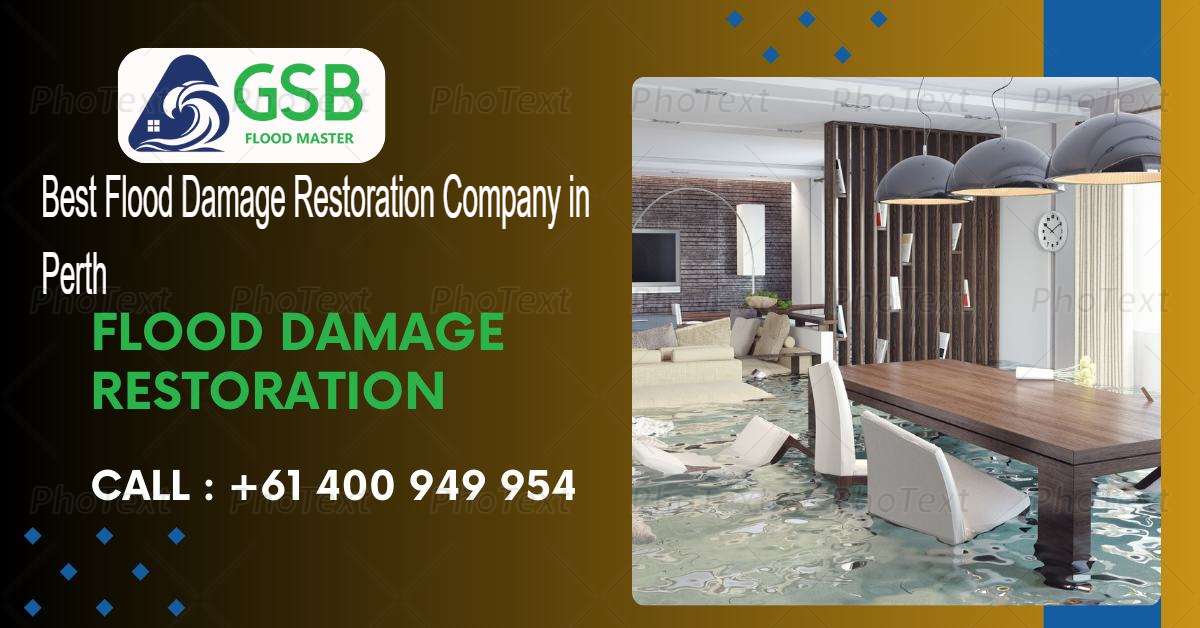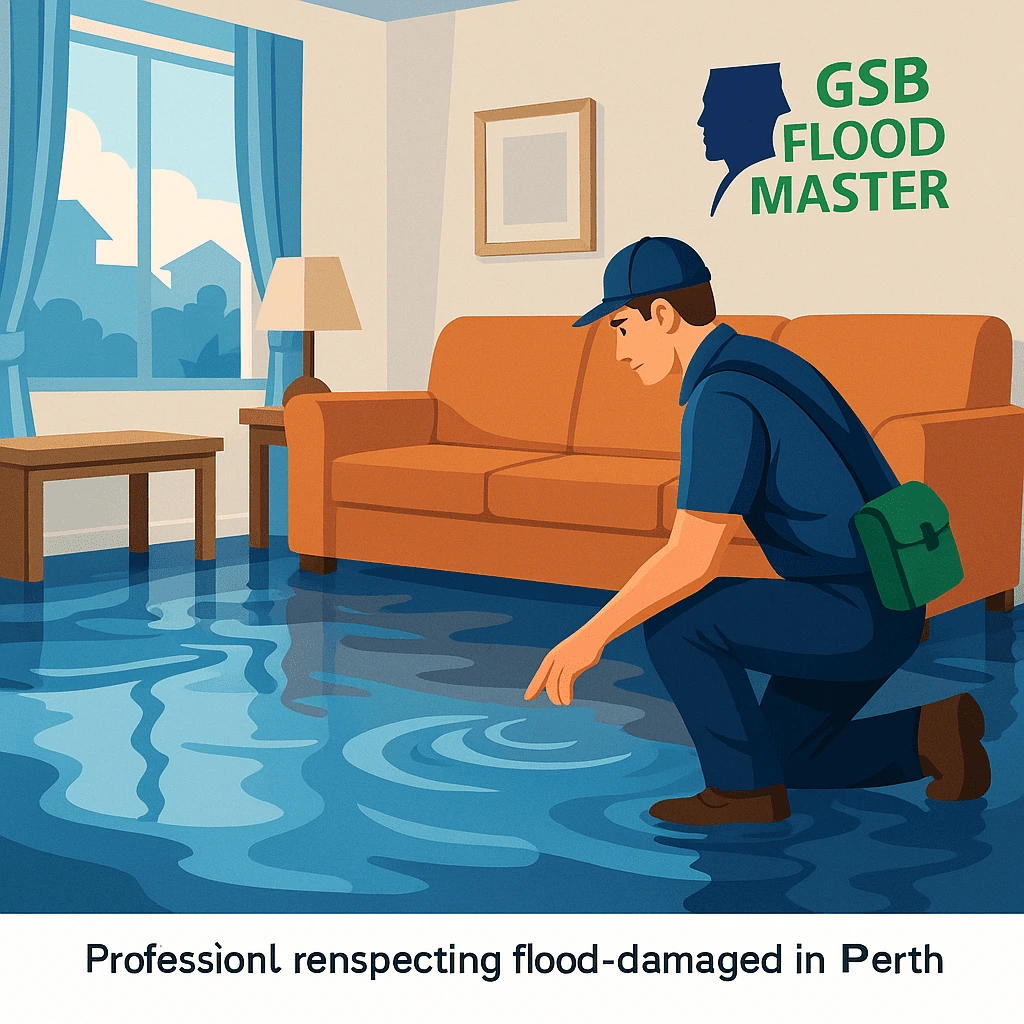
Living in Perth, we’re no strangers to unexpected weather events. Whether it’s a burst pipe during winter, severe storm damage, or flash flooding from heavy rainfall, water damage can devastate your home or business in minutes. As Perth’s trusted flood damage restoration specialists, we understand the urgency and stress that comes with water emergencies.
Why Flood Damage Restoration Requires Immediate Professional Attention
When water invades your Perth property, every minute counts. Within the first 24-48 hours, what starts as water damage can quickly escalate into a far more serious and expensive problem. Here’s what happens when flood damage isn’t addressed promptly:
The 24-Hour Rule: Mold spores begin germinating within 24 hours of water exposure. Perth’s humid climate, especially during summer months, creates perfect conditions for rapid mold growth.
Structural Integrity Risks: Water seeps into subflooring, wall cavities, and structural timber. Perth’s older homes with jarrah and other hardwood structures are particularly vulnerable to water damage that can compromise the building’s foundation, and following a well-informed guide to water damage recovery in Perth becomes crucial when addressing long-term risks.
Health Hazards: Contaminated floodwater contains bacteria, sewage, and chemicals that pose serious health risks to your family. Professional sanitization is essential to eliminate these dangers.
Common Causes of Flood Damage in Perth Properties
Perth property owners face unique water damage challenges due to our climate and infrastructure:
Weather-Related Flooding
- Winter Storm Damage: Perth’s winter storms can overwhelm drainage systems, causing water to back up into homes
- Summer Flash Floods: Sudden downpours during summer months can quickly overwhelm unprepared properties
- Coastal Storm Surge: Properties near the coast face additional risks from storm surge and high tides
Plumbing and Infrastructure Issues
- Burst Pipes: Perth’s aging infrastructure and temperature fluctuations can cause sudden pipe failures
- Hot Water System Failures: Tank ruptures can release hundreds of liters of water in minutes
- Blocked Drains: Tree roots infiltrating sewer lines are common in Perth’s established suburbs
Appliance Malfunctions
- Washing Machine Overflows: Faulty hoses or pumps can flood laundries and adjacent rooms
- Dishwasher Leaks: Internal component failures can cause significant kitchen flooding
- Air Conditioning Condensation: Blocked drainage can cause ceiling and wall damage
The Professional Flood Damage Restoration Process: What to Expect Step-by-Step

Understanding the professional flood damage restoration process is crucial when choosing a company in Perth. A reputable restoration company follows a systematic, industry-standard approach that ensures thorough damage assessment, proper cleanup, and complete restoration. Here’s what you should expect from start to finish:
Phase 1: Emergency Response and Initial Assessment
Immediate Response (Within 60 Minutes) When you call a professional flood damage restoration company, the clock starts ticking. The best Perth restoration companies offer true 24/7 emergency response, meaning technicians are dispatched immediately, not “first thing in the morning.” During this initial response:
- Safety First: Technicians assess electrical hazards, structural stability, and contamination risks
- Damage Containment: Immediate steps to prevent further damage, including tarping, boarding up, or isolating affected areas
- Initial Documentation: Preliminary photos and notes for insurance purposes
- Equipment Deployment: Bringing in emergency equipment if immediate action is needed
Comprehensive Property Assessment A thorough assessment is the foundation of effective restoration. Professional technicians use advanced tools to evaluate:
- Moisture Detection: Infrared cameras and moisture meters identify hidden water damage in walls, floors, and ceilings
- Structural Evaluation: Assessment of building integrity, including foundation, framing, and load-bearing elements
- Contamination Assessment: Determining water category (clean, gray, or black water) and associated health risks
- Scope Documentation: Detailed mapping of all affected areas, including hidden damage
Restoration Plan Development Based on the assessment, professionals create a customized restoration plan that includes:
- Timeline Estimates: Realistic timeframes for each phase of restoration
- Equipment Requirements: Specific tools and machinery needed for your property
- Cost Projections: Detailed estimates for insurance and planning purposes
- Mitigation Strategies: Steps to prevent secondary damage during restoration
Phase 2: Water Extraction and Removal
Standing Water Removal The first priority is removing standing water as quickly as possible. Professional restoration companies use:
- Truck-Mounted Extractors: Powerful units that can remove thousands of gallons per hour
- Portable Extractors: Smaller units for confined spaces and upper floors
- Submersible Pumps: Heavy-duty pumps for basement flooding and large volumes
- Wet Vacuums: Specialized equipment for carpets, upholstery, and detailed extraction
Moisture Extraction from Materials Water doesn’t just sit on surfaces – it penetrates deep into materials. Professional extraction includes:
- Carpet and Pad Extraction: Specialized tools that pull moisture from carpet fibers and padding
- Hardwood Floor Drying: Injection systems that force moisture out of wood flooring
- Drywall Moisture Removal: Strategic drilling and extraction to save drywall when possible
- Insulation Assessment: Determining if insulation can be dried or must be replaced
Sewage and Contaminated Water Handling For Category 2 (gray water) and Category 3 (black water) situations, professionals follow strict protocols:
- PPE Requirements: Full protective equipment for technician safety
- Proper Disposal: Contaminated materials disposed of according to regulations
- Disinfection Protocols: Immediate sanitization of affected areas
- Air Quality Management: HEPA filtration and air scrubbing during removal
Phase 3: Drying and Dehumidification
Strategic Equipment Placement Effective drying isn’t just about putting fans in a room. Professionals strategically place equipment based on:
- Airflow Patterns: Creating optimal air circulation for maximum drying efficiency
- Moisture Mapping: Targeting equipment placement based on moisture readings
- Temperature Control: Maintaining ideal conditions for rapid, controlled drying
- Psychrometric Calculations: Using scientific principles to optimize drying conditions
Industrial-Grade Drying Equipment Professional restoration companies use commercial-grade equipment that’s far more powerful than consumer units:
- High-Velocity Air Movers: Industrial fans that move thousands of cubic feet of air per minute
- Refrigerant Dehumidifiers: Remove moisture from the air efficiently in normal conditions
- Desiccant Dehumidifiers: Specialized units for low-humidity or cold-weather drying
- Heat Injection Systems: Warm air injection for faster drying in specific situations
Continuous Monitoring and Adjustment Professional drying isn’t a “set it and forget it” process. Technicians:
- Daily Moisture Readings: Track progress with calibrated meters
- Equipment Adjustment: Reposition or modify equipment based on drying progress
- Environmental Control: Adjust temperature and humidity for optimal conditions
- Progress Documentation: Detailed logs for insurance and quality assurance
Phase 4: Cleaning and Sanitization
Comprehensive Cleaning Protocols Once materials are properly dried, thorough cleaning begins:
- Surface Cleaning: All affected surfaces cleaned with appropriate solutions
- Deep Cleaning: Carpets, upholstery, and fabrics receive specialized treatment
- Content Cleaning: Personal belongings and furniture cleaned and restored when possible
- Air Duct Cleaning: HVAC systems cleaned if contaminated during flooding
Professional Sanitization Flood damage often introduces bacteria, mold spores, and other contaminants. Professional sanitization includes:
- Antimicrobial Treatment: Hospital-grade disinfectants applied to all affected surfaces
- Mold Prevention: Specialized treatments to prevent mold growth
- Odor Neutralization: Advanced techniques to eliminate musty, flood-related odors
- Air Quality Treatment: HEPA filtration and air scrubbing to remove airborne contaminants
Content Restoration Services Professional companies often provide content restoration services:
- Pack-Out Services: Removing and storing belongings during restoration
- Cleaning and Restoration: Specialized cleaning for documents, electronics, and valuables
- Inventory Management: Detailed tracking of all items removed and restored
- Pack-Back Services: Returning items once property restoration is complete
Phase 5: Repairs and Reconstruction
Structural Repairs Flood damage often requires reconstruction work:
- Drywall Replacement: Removing and replacing damaged drywall sections
- Flooring Restoration: Repairing or replacing damaged flooring materials
- Insulation Replacement: Installing new insulation where contaminated material was removed
- Electrical Work: Repairing or replacing damaged electrical components
Finish Work and Restoration The final phase involves returning your property to pre-loss condition:
- Painting and Texturing: Matching existing finishes perfectly
- Trim and Molding: Restoring architectural details
- Final Inspections: Ensuring all work meets quality standards
- Warranty Provision: Providing warranties on restoration work
Phase 6: Quality Assurance and Final Inspection
Moisture Verification Before declaring the job complete, professionals verify:
- Moisture Levels: All materials returned to normal moisture content
- Structural Integrity: Confirming no hidden damage remains
- Air Quality: Testing for mold spores and other contaminants
- System Functionality: Ensuring all building systems operate properly
Customer Walkthrough A reputable company will conduct a final walkthrough with you to:
- Explain Completed Work: Detailed explanation of all restoration performed
- Provide Documentation: Complete records of all work performed
- Address Questions: Answering any concerns about the restoration
- Preventive Recommendations: Advice on preventing future water damage
Take Action Now: Don’t Let Water Damage Become a Bigger Problem
If you’re dealing with flood damage in Perth, immediate professional intervention is essential. Every hour of delay increases the cost, complexity, and health risks associated with water damage restoration.
At GSB Flood Master, our experienced team of certified restoration professionals is standing by 24/7 to respond to your emergency. We understand the stress and disruption that flood damage causes, and we’re committed to restoring your property quickly, safely, and completely.
Don’t risk your family’s health, your property’s value, or your peace of mind by attempting DIY solutions or delaying professional help. GSB Flood Master has been Perth’s trusted choice for flood damage restoration Perth services, helping hundreds of property owners recover from water emergencies.
Why Perth Residents Choose GSB Flood Master:
- 24/7 Emergency Response: Available when you need us most
- Local Perth Expertise: We understand your property’s unique challenges
- Certified Professionals: IICRC-trained technicians with years of experience
- Complete Restoration: From water extraction to final repairs
- Insurance Approved: Working directly with your insurance company
Emergency Response Available 24/7 Call GSB Flood Master +61 400 949 954 now for immediate flood damage restoration services throughout Perth and surrounding areas. Our certified technicians are ready to help you every step of the way, from emergency water extraction to complete property restoration.
